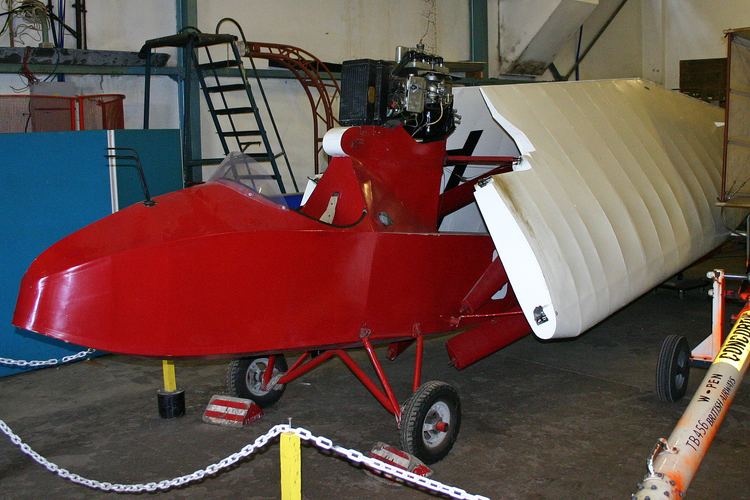Top speed 113 km/h Length 6.45 m | Wingspan 12 m | |
 | ||
The B.A.C. Drone was a British ultralight aircraft of the 1930s.
Contents
Design
During the early 1930s, the British Aircraft Company of Maidstone, Kent built a series of gliders culminating in the B.A.C. VII tandem two-seater. In 1932 the firm fitted a 600 c.c. Douglas motorcycle engine above the high wing on a steel tube pylon. It flew as a single-seater, and was known as the B.A.C. Planette. On 13 May 1933, the designer C.H. Lowe Wylde was killed in a crash of the first Planette at West Malling. The firm was then taken over by Robert Kronfeld who modified the second Planette with a streamlined pylon, and renamed the design the Drone.
Production
Premises nearer London were acquired in 1935 at London Air Park, Hanworth, in Middlesex, and production of the single-seat aircraft commenced there. In 1936, the company was renamed Kronfeld Ltd, and 20 Drones were built during the year. Aircraft fitted with the 23 hp (17 kW) Douglas Sprite engine became known as the Kronfeld Super Drone. A version with a 30 hp (22 kW) water-cooled Carden-Ford converted car engine and swept wings was known as the Drone de Luxe. The firm closed down in 1937, after 33 Drones had been completed.
The Drone became popular with private owners. Col. the Master of Sempill startled the aviation world in April 1936, when he flew Drone G-ADPJ from Croydon Airport to Berlin in 11 hours flying time on 14 gallons of petrol. The return took him nine hours. Two Drones flew over 40,000 miles with C.W.A. Scott's air display team. During the Second World War, a camouflaged Drone de Luxe was unofficially flown by pilots of No. 609 Squadron on duck-shooting sorties using a 12-bore shot gun and a ring-and-bead sight.
Survivors
Eight Drones survived the Second World War, and three of those flew again. Three Drones remained extant in 2006, including the sole surviving Kronfeld Drone de Luxe, G-AEKV, which last flew in 1984 and is now preserved in ground running condition at Brooklands Museum in Surrey.
Specifications (Super Drone)
Data from Jackson (1973), p.174
General characteristics
Performance
